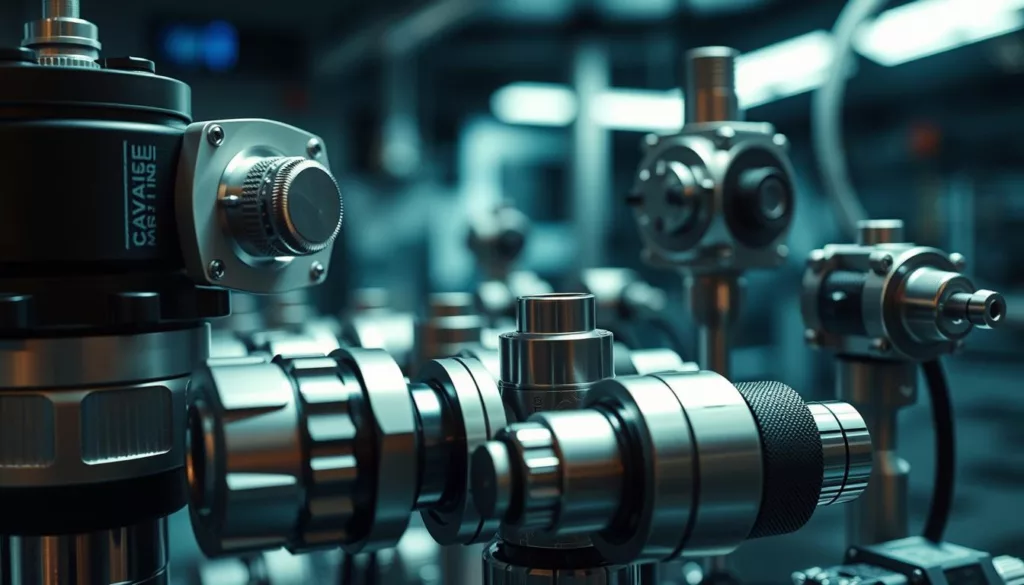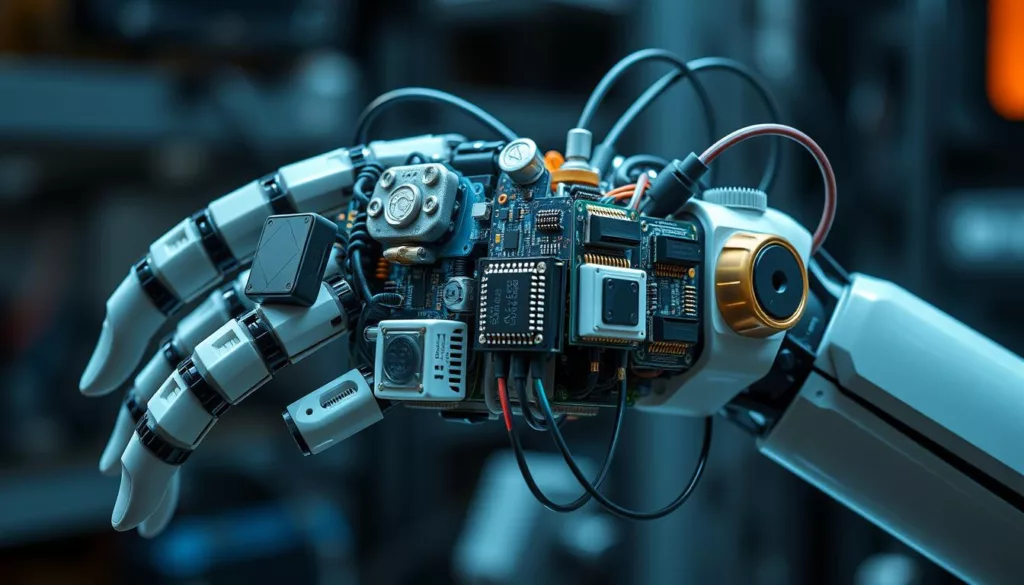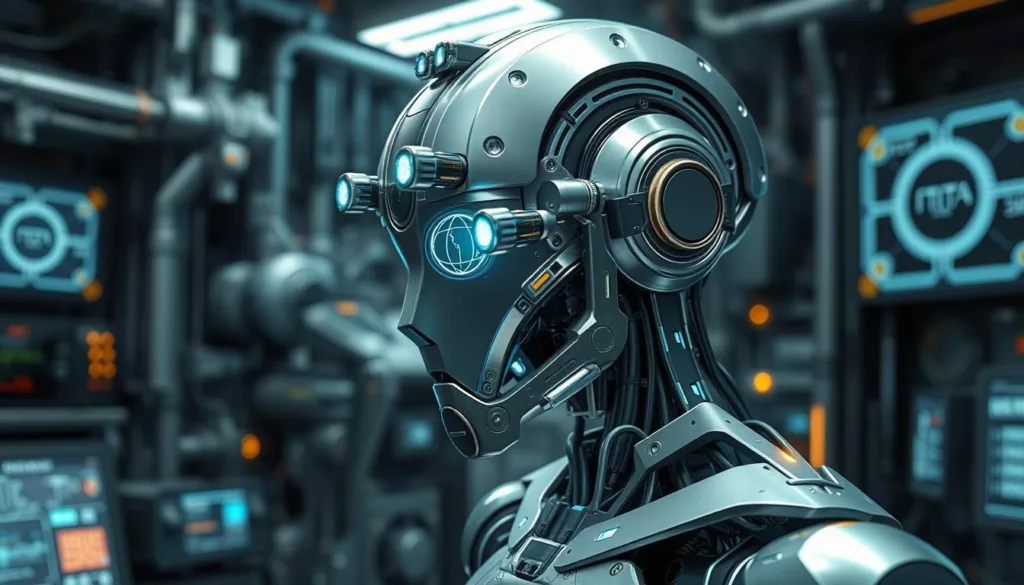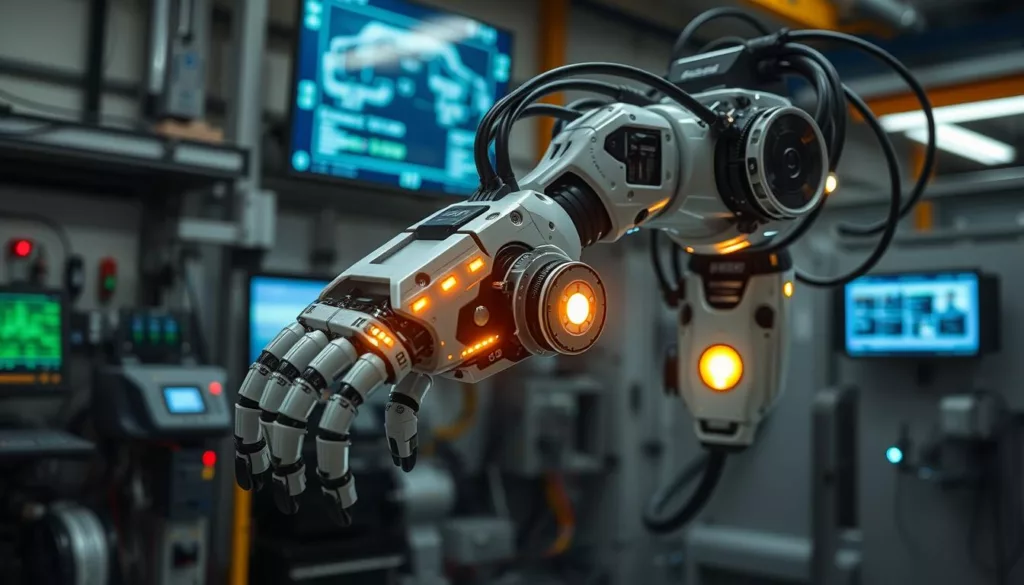Robotics is a complex field that needs advanced sensor technology for better interactions and perceptions. Multi-axis sensors are key, as they can detect and measure different physical quantities in multiple ways. This guide will dive into how these sensors help robots interact, their types, uses, and the future of this technology.
Key Takeaways
- Multi-axis sensors are vital for complex robot interactions, giving robots the data they need for perception, navigation, and control.
- These sensors include accelerometers, gyroscopes, and magnetometers, each with its own strengths and uses in robotics.
- By combining data from multiple sensors, we can improve system performance and reliability.
- Choosing and integrating the right multi-axis sensors is key to overcoming environmental challenges and fitting with current robotic systems.
- New advancements in multi-axis sensor technology are leading to more advanced and independent robotic applications in the future.
Introduction to Multi-axis Sensors
In robotics, multi-axis sensors are key to making machines smarter. They measure motion or orientation in several ways at once. This gives robots a full picture of their surroundings.
What Are Multi-axis Sensors?
Multi-axis sensors can detect different kinds of motion. They track linear acceleration, angular velocity, and magnetic fields. Unlike single-axis sensors, they offer a detailed view of a robot’s movements.
Importance in Robotics
Multi-axis sensors are vital for robots. They help with multi-sensor fusion, environmental mapping, and object recognition. This data boosts a robot’s navigation, interaction, and decision-making skills.
| Sensor Type | Measured Dimensions | Robotic Applications |
|---|---|---|
| Accelerometer | Linear acceleration along multiple axes | Motion control, orientation detection, vibration monitoring |
| Gyroscope | Angular velocity around multiple axes | Attitude estimation, motion stabilization, navigation |
| Magnetometer | Magnetic field orientation in multiple axes | Compass heading, magnetic field mapping, object detection |
Robots use multi-axis sensors to map their environment better. This lets them move through complex spaces more easily. These sensors also help robots recognize and interact with objects.
“The integration of multi-axis sensors in robotic systems is a game-changer, unlocking a new era of enhanced environmental perception and intelligent decision-making.”
Types of Multi-axis Sensors
In robotics, multi-axis sensors are key for smooth human-robot interaction and better sensor integration. They come in different types, each with special abilities and uses.
Accelerometers
Accelerometers measure how fast an object moves along one or more axes. In robots, they help track motion, orientation, and vibrations. This data is useful for navigation, controlling movement, and detecting impacts.
Gyroscopes
Gyroscopes measure how fast an object spins around one or more axes. They help robots stay stable, track their orientation, and control movements. This is very important in complex human-robot interaction situations.
Magnetometers
Magnetometers measure the magnetic field’s strength and direction. In robots, they guide navigation by showing the robot’s position relative to Earth’s magnetic field. This info helps the robot understand its surroundings better.
Combined Sensors
Many robots now use sensors that combine accelerometers, gyroscopes, and magnetometers. These multi-axis sensors give a detailed view of the robot’s movements, orientation, and environment. This leads to better navigation, control, and performance in complex human-robot interaction tasks.
“The integration of multi-axis sensors is key for advanced human-robot interaction and better robotic system capabilities.”
Applications of Multi-axis Sensors in Robotics
In robotics, multi-axis sensors are key, boosting performance, safety, and autonomy. They help industrial robots move precisely and work well with humans and cobots. These sensors change how we use and interact with robots.
Industrial Robots
In manufacturing, multi-axis sensors are vital for industrial robots. They use real-time data and AI for complex tasks. These sensors track the robot’s position, orientation, and force, ensuring accurate control and monitoring.
Collaborative Robots (Cobots)
Cobots have brought a new level of human-robot interaction. Multi-axis sensors are essential for safe and easy work with these robots. They watch the human and cobot’s positions and forces, keeping everyone safe.
Autonomous Vehicles
In self-driving cars, multi-axis sensors are key for safe navigation. They use accelerometers, gyroscopes, and magnetometers to track the vehicle’s movements and conditions. This helps the car make smart decisions and handle changing situations well.
As multi-axis sensors in robotics grow, they’re set to change what’s possible. They’ll bring new levels of performance, teamwork, and freedom to many industries and uses.
Understanding Sensor Fusion
In robotics, using many sensors is key to better system performance. This is called sensor fusion. It mixes data from different sensors to give a clearer picture of the robot’s world and how it interacts with it.
Definition of Sensor Fusion
Sensor fusion combines data from various sensors to give a more accurate view of the world. It uses data from sensors like accelerometers, gyroscopes, and magnetometers. This way, it offers a detailed understanding of the robot’s position, direction, and its surroundings.
Benefits of Sensor Fusion in Robotics
- It makes the robot’s view more accurate and reliable by reducing errors from individual sensors.
- Robots can understand their environment better, making them more capable in complex situations.
- It also makes robots more resilient against environmental changes or sensor failures.
Techniques Used for Sensor Fusion
Several techniques are used in sensor fusion, each with its own benefits. Some common ones are:
- Kalman Filtering: This algorithm combines data from sensors to estimate the system’s state, considering the noise in the data.
- Complementary Filtering: It blends high and low frequency data from sensors to improve the system’s state estimation.
- Machine Learning: Advanced algorithms like neural networks can learn from sensor data, leading to more advanced fusion methods.
By using these techniques, robotics engineers can make robots smarter and more adaptable. They can navigate complex environments more accurately and reliably, thanks to machine learning and multi-sensor fusion.
Choosing the Right Multi-axis Sensors
When picking out multi-axis sensors for robots, it’s key to get it right. These sensors help robots understand their surroundings, move around, and make decisions. Think about a few important things when picking sensors.
Key Considerations
Look closely at what each sensor can do. Important things to check include:
- Sensor Accuracy and Precision: Make sure the sensors are precise enough for your robot’s needs.
- Measurement Range: Check if the sensor can handle the space and tasks your robot will do.
- Environmental Durability: See if the sensor can handle the environment your robot will be in.
- Power Consumption: Check how much power the sensor uses to make sure it fits with your robot’s power needs.
- Size and Weight: Make sure the sensors fit in your robot’s design without any issues.
Compatibility with Existing Systems
It’s also important to pick sensors that work well with your robot and software. Look at how the sensors communicate and fit into your system. This makes setting up your robot easier and more efficient.
By thinking about these points and making sure sensors fit with your system, you can improve your robot’s abilities. This leads to better robotic perception and sensor integration.
Integration of Multi-axis Sensors in Robot Designs
Adding multi-axis sensors to robots is key to using real-time data well. This step helps robots work more precisely and quickly. It also makes them more flexible in their tasks.
Hardware Integration
Putting multi-axis sensors into robots needs careful planning. You have to think about how to mount them, connect them, and power them. It’s important to keep the sensors safe and free from interference.
Software Integration
It’s just as important to connect the sensors to the robot’s software. You need good algorithms for processing data and making decisions fast. This lets the robot adapt and perform better.
Getting multi-axis sensors to work in robots takes a team effort. It’s about both the hardware and the software. With these technologies, robots can do more and work better, leading to more advanced robots.
Challenges in Implementing Multi-axis Sensors
Robotics is getting more advanced, and multi-axis sensors are key for complex tasks. They help with mapping environments and recognizing objects. But, setting up these sensors is tough. Let’s look at some big hurdles for engineers and developers.
Environmental Factors
Multi-axis sensors face big challenges from the environment. Things like temperature changes, electromagnetic fields, and vibrations can mess up their data. For example, temperature shifts can make accelerometers and gyroscopes less accurate.
Also, electromagnetic fields from nearby machines can mess with magnetometers. This makes it hard for robots to map their surroundings and recognize objects.
Calibration Issues
Keeping multi-axis sensors calibrated is vital for their accuracy. Over time, sensors can drift or become misaligned. It’s important to find ways to keep them precise.
This might mean regular checks, using special algorithms, or sensors that can adjust themselves. Finding the right solution is key to making robots work better.
To beat these challenges, we need a complete plan. This plan should cover the sensors, how they work together, and the environment. By tackling these issues, we can make robots more effective and capable.
Advances in Multi-axis Sensor Technology
The world of multi-axis sensors is changing fast. This is thanks to new artificial intelligence (AI) and machine learning (ML) algorithms. These breakthroughs are leading to new sensor designs that improve how robots see and interact with the world.
Emerging Trends
One big trend is combining AI and ML with sensors. These tools help sensors understand data better. They can spot patterns, guess what will happen next, and adjust to their surroundings with great accuracy. This makes sensors smarter, allowing them to give better feedback to robots.
Innovations in Sensor Design
Designs of multi-axis sensors are also getting better. Making sensors smaller and lighter has led to more efficient and compact designs. These new designs are more sensitive, accurate, and versatile. This means robots can see and react to their surroundings more clearly.
Also, using sensor fusion has changed how sensors work. By mixing data from different sensors, like accelerometers and gyroscopes, fusion algorithms give a fuller picture of a robot’s position and actions. This makes sensors more reliable and accurate.
“The integration of artificial intelligence and machine learning into multi-axis sensor technology has opened up a new frontier of robotic perception and interaction. These advancements are transforming the way robots perceive and respond to their environments, paving the way for a more intelligent and adaptable future.”
As robotics keeps growing, multi-axis sensor tech will be key. With AI, ML, and new designs, robots will move better in complex spaces. They’ll also interact with people and objects more smoothly and adapt quickly to new situations.
Case Studies: Successful Implementations
In the world of human-robot interaction, multi-axis sensors have made a big difference. Let’s look at two exciting case studies that show how these sensors have changed the game.
Manufacturing Industry
A top automotive manufacturing plant has seen a huge change with multi-axis sensors. These sensors watch the robotic arms’ movement and position. This lets them make adjustments on the fly, cutting down on mistakes and boosting speed.
This has led to less downtime, better product quality, and safer work environments. It’s all thanks to better teamwork between humans and robots.
Logistics and Warehouse Management
In the quick world of logistics and warehouse management, multi-axis sensors are key. Autonomous guided vehicles (AGVs) with these sensors move around warehouses with great accuracy. They work well with people and other robots, making inventory management and workflow better.
This setup has also cut down on the chance of accidents. It’s led to more productivity and safety in warehouses.
These stories show how multi-axis sensors are changing industries. They help with innovation, efficiency, and safety in human-robot interactions. As the tech gets better, we’ll see even more amazing uses of these sensors.
Future Prospects of Multi-axis Sensors
The world of robotics is changing fast, and multi-axis sensors are at the heart of this change. These sensors are key to the future of robotics. They are being driven by big leaps in artificial intelligence (AI) and machine learning (ML).
Trends Shaping the Future
AI and ML are making multi-axis sensors smarter. These sensors can now understand complex data and make decisions on their own. This leads to robots that can adapt and respond better to their surroundings.
Potential Advancements in Robotics
- Enhanced Spatial Awareness: With advanced AI and ML, robots can better understand their environment. This makes them navigate complex spaces more easily and accurately.
- Improved Interaction and Collaboration: Multi-axis sensors with AI and ML help robots interact more naturally with humans. This leads to better teamwork and task completion.
- Predictive Maintenance: These sensors can monitor robots and predict when they might need maintenance. This reduces downtime and keeps robots running smoothly.
| Feature | Benefit |
|---|---|
| Sensor Fusion | Combining data from multiple sensors to provide a more complete understanding of the environment |
| Adaptive Control | Adjusting robotic movements and behaviors based on real-time sensor data and environmental changes |
| Self-Diagnostics | Identifying and reporting any issues or malfunctions within the robotic system |
As AI and ML keep getting better, we’ll see even more amazing things from multi-axis sensors. The future looks bright for robots that are smarter, more adaptable, and better at working together. These advancements will change industries and how we use technology.
“The future of robotics lies in the seamless integration of advanced sensors, AI, and machine learning, empowering robots to become more adaptable, intelligent, and responsive to their environments.”
Conclusion
In this guide, we’ve looked at how multi-axis sensors are changing robotics. These sensors are key in many areas, like industrial settings, collaborative robots, and self-driving cars. They bring precision and versatility to these fields.
Summary of Key Points
We’ve talked about different types of multi-axis sensors, like accelerometers and gyroscopes. These sensors work together through sensor fusion to make robots better. We also discussed how to pick the right sensors and integrate them into robots.
Final Thoughts on the Future of Robotics
The future of robotics looks bright with new advancements in sensors. We’re seeing more artificial intelligence and better, smaller, and energy-saving sensors. This means robots will get smarter and more flexible. The mix of sensors and robotics will keep changing what’s possible, improving our world.






